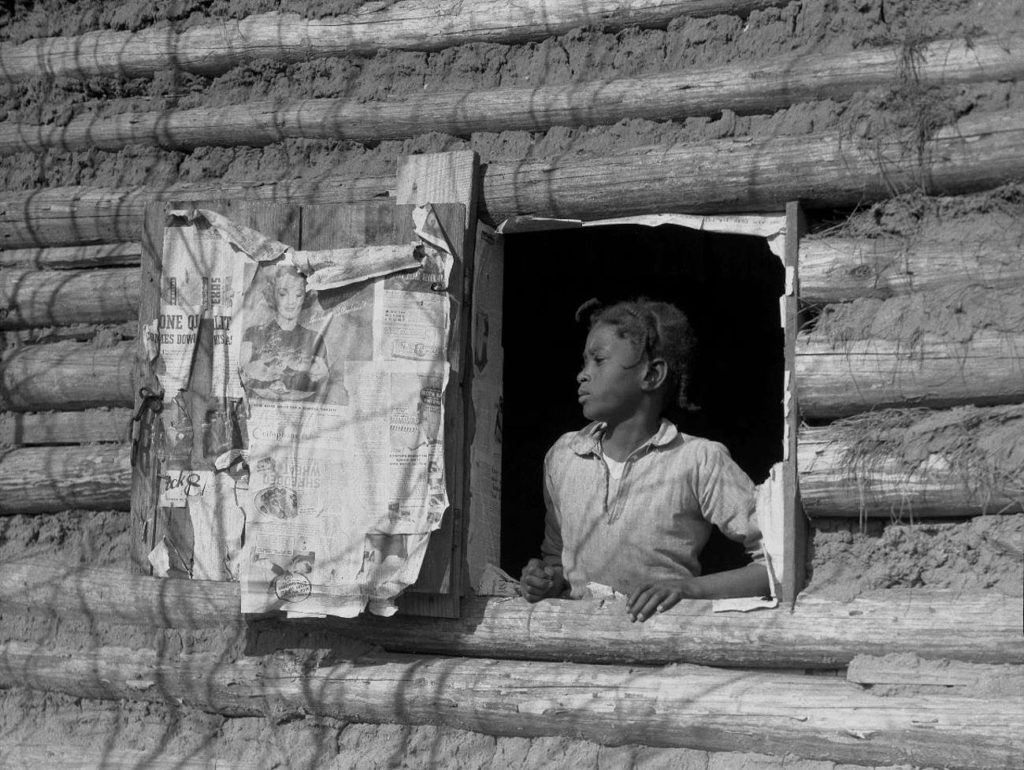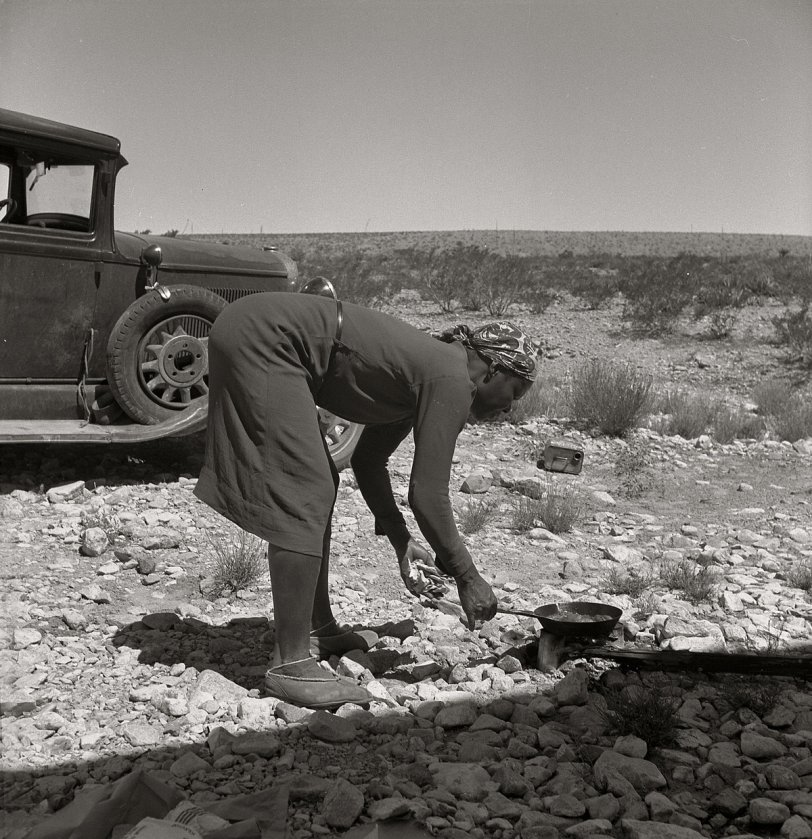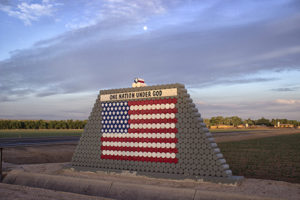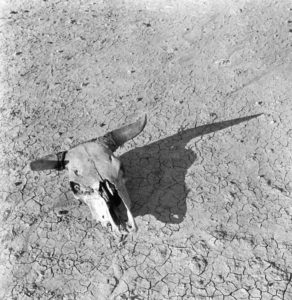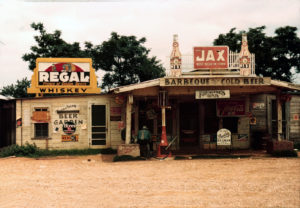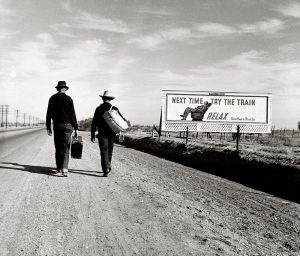Text by Bruce Berman, Site Editor
“You see the girl — that’s effect one. You see the ad [the blond woman] — that’s effect two. But the third effect is when you see both images together and recognize the irony.” — Arthur Rothstein on the photo
It’s a beautiful photograph, no doubt. Rule of thirds composition. Great light creating great texture. Juxtaposition of the printed rumpled paper against the real person, Black tones versus light tones, i.e., contrast. The slightly diagonal lines and the pattern they create. Textbook rules of composition. But, of overwhelming importance, of course, the implied comment and intention of the photograph.
Arthur Rothstein understood and believed in the power of photography to make social commentary. Working for the United States government, Rothstein photographed Artelia Bendolph in Alabama, to illustrate the effects of the Bankhead-Jones Farm Tenancy Act of 1937.
Of course -and this is NEVER supposed to be asked when discussing the iconic FSA project- should someone working for the government EVER be allowed to use their words or photographs to “make social commentary?” Isn’t that the realm of commentators in the news industry, i.e., non tax paid?

